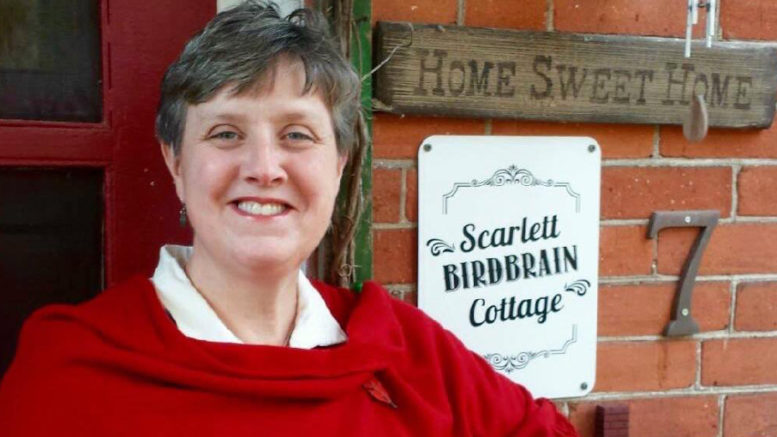Laurie Snider
Notes from the Nest
When Beverly Ketchen graduated from the Peterborough Civic Hospital, School of Nursing on Sept. 2, 1959, she was wearing a crisp, clean, pure white uniform and a stiff, starched cap with two black stripes. Each graduating nurse received a blazer, an enchanting navy blue cape, a dozen red roses and a 14-caret gold pin.
Mom began her training in September of 1956, at the age of 17 and lived in residence with her fellow classmates for the next three years. Her tuition of $250 covered three years of education and practice, residence, meals, books, uniforms and all the mementos and festivities associated with graduation. They were given eight, 10, then 12 dollars a month for expenses each successive year.
As students wearing heavy, blue uniforms with caps, cuffs and collars, they were inspected regularly. Their shoes, laces and stockings needed to be impeccably clean, no jewelry was allowed and fingernails needed to be free of polish or dirt. They were called ‘Probies,’ for their first three months, until passing an exam which allowed them to continue.
Mom giggled when she shared their first assignment, once beginning in-hospital training, was arranging flowers. They progressed to bed-making, bed-bathing, dressings, catheterizations, giving medications and needles (stainless steel), to working as staff on the various floors; medicine, surgery, paediatrics, obstetrics etc. They also spent time assisting in the operating rooms and worked all variety of shifts. Their full-hands-on apprenticeships prepared them remarkably well for careers in nursing, as they were exceptionally, caring, capable and competent.
Mom spent some of her first years working in the Emergency department in Bowmanville. She explained people only came with legitimate emergencies, such as heart attacks, accidents, broken bones and lacerations. These were pre-OHIP days, so if you arrived with a cough or a rash, you were charged $2.50 for your trouble, a lot of money at the time. She shared if you had a heart attack, you were given oxygen and your vital signs were taken regularly. There were no fancy monitors, ECGs, IVs, CPR or specialized cardiac medications. Basically, you were kept comfortable and then it was wait and see.
She spent the second half of her vocation as a visiting nurse with the VON, where she proved her mettle. She boiled instruments for procedures on patient’s stoves, cared for some who went into cardiac arrest in their homes, was attacked by a pair of territorial blue jays, had a would-be hit-and-run victim leap onto the hood of her car and once had a dog lift his leg and pee on her, when she was caring for it’s mistress. She rolled with it all and never stopped smiling.
I spent my career after graduating in 1983, from Loyalist College, in Belleville working on an Oncology floor in Ottawa, followed by a stint in ICU, before settling in Emergency, in Belleville and then Napanee. In a relatively short period of time many state-of-the-art advancements had occurred in the field of medicine. Complicated chemotherapys were being used to fight cancer, as well as multiple blood-product infusions, delivered via specialized venous catheters and bone marrow transplants were being pioneered.
Patients who couldn’t breath on their own were hooked up to ventilators. Many pharmaceutical innovations provided new lifesaving drugs and when someone’s heart stopped, CPR was definitely administered. Nurses absolutely need strong stomachs, as at various points in my career I’ve witnessed gruesome injuries and have been handed a wide array of body parts including, fingers, a scalp and once a lower leg still in its boot, that had been severed by a train.
Our daughter Ellie is now a third generation Emergency nurse, who’s presently employed at Kingston General. Ellie earned her degree in nursing. Things have evolved in so many different ways since her Grandmother’s time. Long gone are the starched white caps, which ultimately proved to be harbourers of germs and now pants and tops (scrubs), are the preferred uniforms, far easier to clean. For her generation as well as tenderness, empathy and tenacity, a highly advanced skill set and knowledge base is required.
Hospitals are noisy, crowded places with extraordinary pieces of equipment for monitoring vital signs, delivering IVs, medications, scanning, pumping, beeping and alarming. Thankfully highly trained, efficient, perceptive and compassionate nursing staff keep careful watch over it all. Today if you have a heart attack, with specialized treatments you have a much greater chance of recovering. Thanks to the dedicated work of nurses so many more patients, with all manner of illnesses and injuries, survive and thrive than ever before.
One thing hasn’t changed though, when you’re sick, struggling, suffering and in need of medical care, nurses are still the healing balm that sooth your discomfort, hold your hand and help you to get through it.

